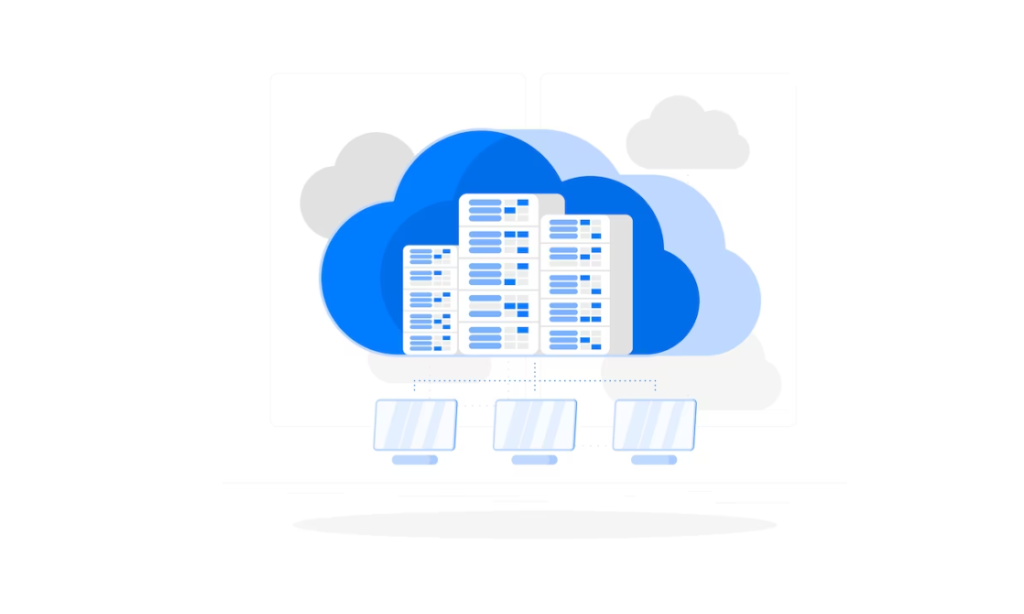Cloud Infrastructure Management involves overseeing the vital elements of your IT framework – in a virtual environment. It is increasingly becoming common for businesses to shift their IT resources to the cloud and make use of readily available online services.
You may also like to explore an article about IoT strategy to enhance your understanding of this critical aspect of cloud management.
Understanding the Layered Architecture of Cloud Computing
Cloud Computing is characterized by its unique stratified structure, which is fundamental to its functionality and efficiency. At the base of this structure is the infrastructure layer, which is composed of critical physical and virtual resources such as computers, networking hardware, and storage systems; these components are essential for the foundational support of the entire cloud architecture.
- Situated above the infrastructure is the platform layer, which includes a variety of system components and services. This layer is pivotal as it forms the supportive base for the subsequent layer, enabling enhanced functionality and stability;
- The next layer in this hierarchical structure is the application layer, which is particularly significant as it manages both user and machine interfaces, playing a key role in how end-users interact with the cloud services;
- At the top of this layered stack are the clients who utilize these services, operating in an environment where each layer seamlessly integrates with the others to provide a cohesive and efficient cloud computing experience.
The Increasing Relevance of Infrastructure-as-a-Service (IaaS)
Infrastructure-as-a-Service (IaaS), an alternate solution for acquiring and managing IT services, is gaining ground. According to Gartner, cloud IaaS is “an immensely automated service where storage, networking capabilities, and compute resources are delivered to the customer on-demand.”
Cloud Infrastructure Management ensures the smooth functioning of your entire IT environment by supporting the foundational layer in IT operations. The efficiency of your IT management significantly impacts your results. Shifting services to the cloud needs a different integration approach that factors in variations in architecture and cloud governance processes.
The Evolving Trend Towards Hybridization

Today, businesses are moving towards hybrid structures, diversifying their infrastructure beyond traditional mainframes, recognizing that cloud technology can offer several benefits:
- Reduction or repurposing of physical space;
- Minimized facilities management time and costs;
- Lower in-house IT staffing, allowing for strategic focuses;
- Elimination of heavy capital investment, transitioning outsourcing costs to operations;
- Replacement of fixed costs with variable ones.
Advantages and Potential Challenges of Cloud Migration
Migration of your infrastructure to the cloud can bring many benefits but also pose possible challenges. Effective cloud infrastructure management involves grasping both to amplify the benefits and diminish potential pitfalls. Picking the right provider can play a major role in either elevating your business to the cloud or increasing the risk of failure.
Cloud Computing for Efficient Business Operations
The cloud provides an efficient way to plan, manage, and predict business operations. Rather than having to anticipate and budget for worst-case scenarios, businesses can quickly scale up or down to meet the varying demands of their operational flow. This agility plays a crucial role in business scalability, such as ramping up for product development cycles.
Outsourcing Cloud Computing Management
Outsourcing cloud computing management allows businesses to focus on aspects that directly contribute to business growth, instead of getting bogged down by day-to-day operations. However, the success of outsourcing heavily relies on choosing the right provider.
The Role of Service Level Agreements (SLA) in Outsourcing
Without well-defined Service Level Agreements (SLAs), accompanied by incentives and penalties to encourage high performance, your operation could potentially suffer. This can impact service availability, support, and your ability to comply with ever-increasing regulations—especially for sectors like healthcare, financial services, or e-commerce.
Future-Ready Cloud Infrastructure Management Strategy

Most industry experts agree that the cloud will be the primary source of new technology in the upcoming years. Having a robust cloud infrastructure management strategy will ensure that your business is ready to leverage these new technologies to remain competitive and profitable.
Conclusion
Cloud Infrastructure Management is undeniably the cornerstone of modern IT operations. It not only accentuates the efficiency of businesses but also paves the way for innovation and scalability. Harmonizing your traditional systems with the cloud brings forth a myriad of benefits – from cost reduction to improved capabilities. Yet, it’s crucial to acknowledge the potential challenges and equip your enterprise with robust cloud management strategies. The future is undeniably cloud-centric, and having an agile, well-orchestrated cloud infrastructure is pivotal for businesses aiming to stay a step ahead in the competitive landscape.
